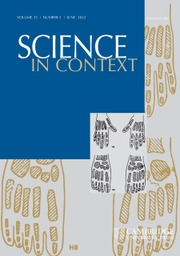Article contents
Conditionals, Inference, and Possibility in Ancient Mesopotamian Science
Published online by Cambridge University Press: 01 March 2009
Argument
This paper argues that ancient Babylonian signs (omens) reflect a mode of inferential reasoning as a function of their syntactic and logical structure as conditionals. Taking into account the institutional context that produced a systematic written body of omens, the paper is principally interested in the cognitive disposition of such texts. Investigating what constitutes system in these works, formal aspects of the material are examined in terms of the nature of conditionals and the logic of conditional statements. It is argued that conditional statements about ominous phenomena speak as much to a notion of conceivability and possibility as to empirical physical actuality. It is claimed that the epistemological character of the Babylonian compendia of signs cannot be understood without due attention to epistemic possibility and further, that the cuneiform omen texts comprise a different kind of scientific knowledge from that limited to a knowledge of physical phenomena and their laws.
Information
- Type
- Research Article
- Information
- Copyright
- Copyright © Cambridge University Press 2009
References
- 5
- Cited by

